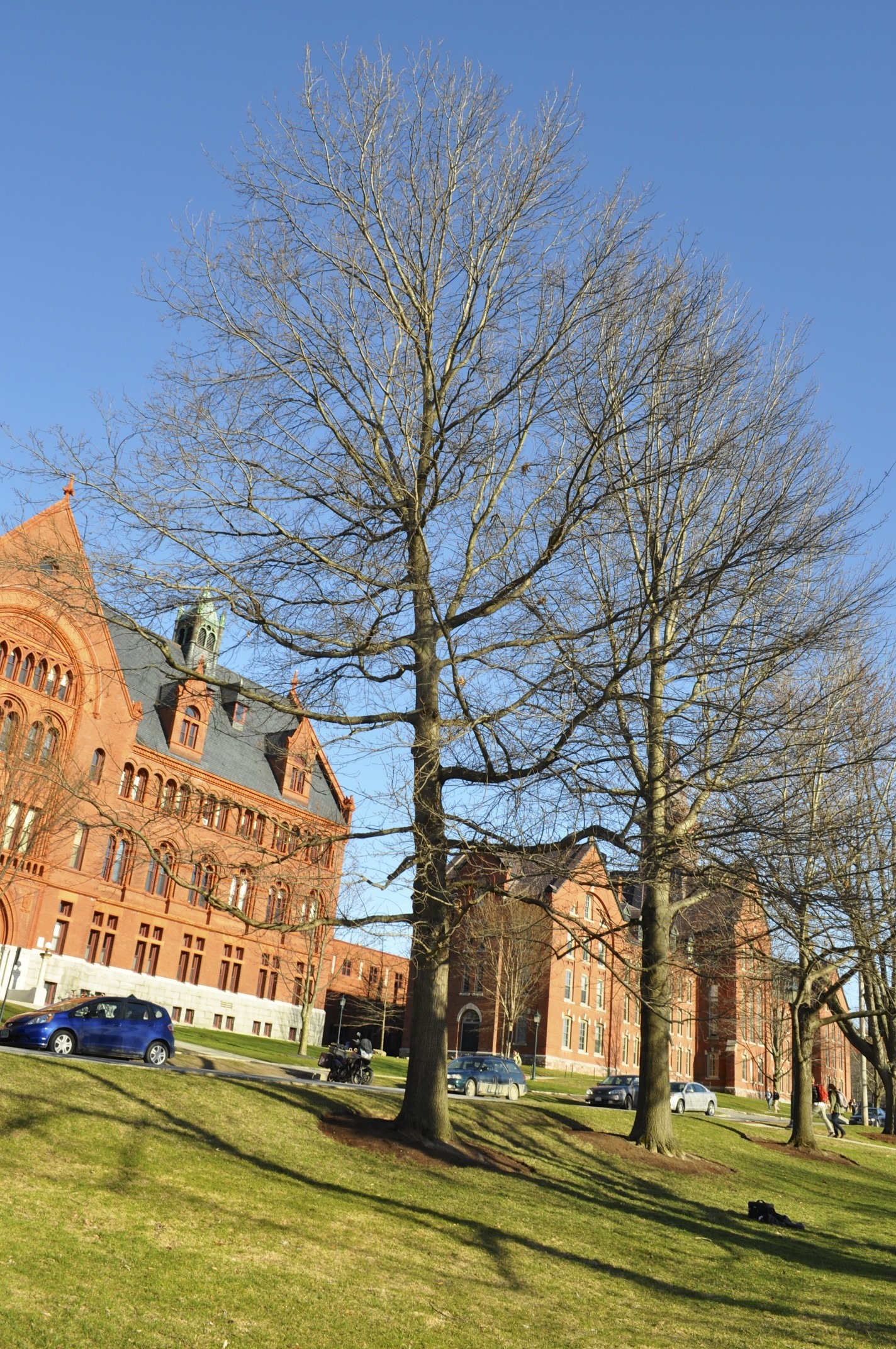Northern Red Oak : Overview
There is nothing quite as peaceful as whiling away those hot summer days under the cool shade of an Oak tree. Imagine sitting under a mighty Northern Red Oak. Lean against the tree and feel the crevasses of its furrowed bark. Tilt your head back to view the straight and true trunk that grows to great heights. See how the branches reach up towards the sky in a spreading form to create a pleasing rounded crown. Notice the dark leaves as they rustle in the breeze, their lobed surface filtering the sunlight.
In autumn, you’ll enjoy sitting under the Red Oak amid the deep reds of its fall foliage. Red by name and red by nature, this oak is native to North America and is famous for its spectacular red autumn leaves. If you sit very still, you’ll share the excitement of neighborhood squirrels and other wildlife that come to collect the acorns that your Northern Red Oak generously produces. Many species of birds, white-tailed deer, and other creatures depend on the acorns as a food source. This is essential in times of food scarcity and the climate gets colder. You will likewise value the Northern Red Oak for all it has to offer.
In the winter, the leaves will fall to the ground. Only the sturdy frame of the Red Oak remains. Yet, the bark remains a distinguishable feature. Its deep furrows run the length of the trunk, almost appearing to create vertical silver-colored stripes.
In the spring, green catkins will appear on your Red Oak as flowers to announce the coming of another growing season. The catkins release massive quantities of pollen into the air, so individuals with allergies may not be so thrilled with the Northern Red Oak during this season.
Hopefully, this little acorn of a tree profile will nurture your knowledge into a mighty Oak.

